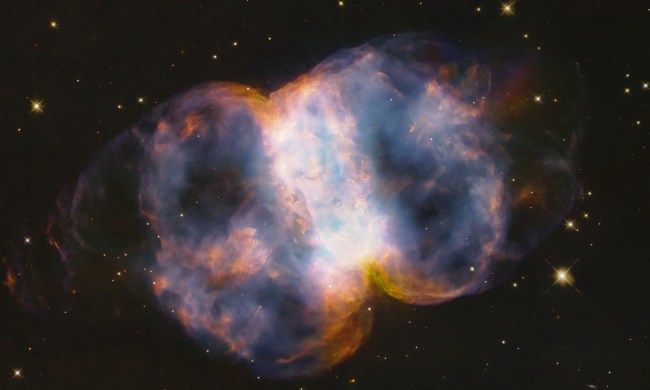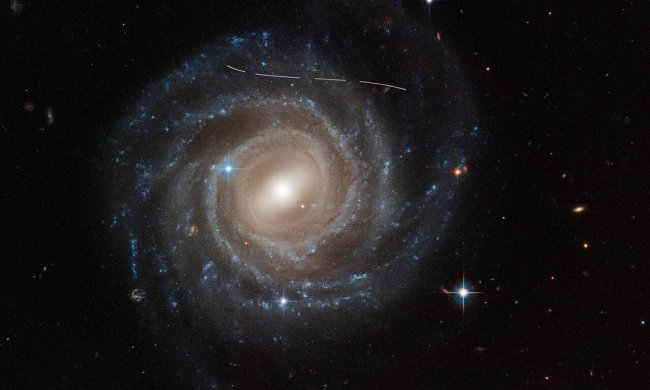A new image from the Hubble Space Telescope released this week shows a special area of star formation; a nursery where stars are born from gas swirling in the area. The object, called J025157.5+600606, is a bubble of hot gas containing regions of dark dust and gas called Free-floating Evaporating Gaseous Globules, or frEGGs.
The gas bubble has beautiful colors and a loose shape, ensconcing the stars which are being born as the gas clumps together. Over time, these clumps grow and increase their gravitational pull, bringing in more gas which forms the basis of a new star.

It is the formation of these stars which ionize the gas around them and lead to the bubble’s properties, as the Hubble scientists explain: “When a massive new star starts to shine while still within the cool molecular cloud from which it formed, its energetic radiation can ionize the cloud’s hydrogen and create a large, hot bubble of ionized gas. Amazingly, located within this bubble of hot gas around a nearby massive star are the frEGGs: Dark compact globules of dust and gas, some of which are giving birth to low-mass stars. The boundary between the cool, dusty frEGG and the hot gas bubble is seen as the glowing purple/blue edges in this fascinating image.”

The frEGGs are associated with objects called Evaporating Gaseous Globules or EGGs, which were first spotted by Hubble in 1995 in the famous Pillars of Creation image. These regions are thought to be an early stage in the formation of protostars, but not every EGG turns into a star. A study of the Eagle Nebula, which is imaged in the Pillar of Creation, found that only around 15% of the EGGs showed signs of star formation.
Of the protostars that do form, some gain enough mass to begin converting hydrogen to helium and become full-fledged stars. Others do not reach this threshold and instead become brown dwarfs, also known as failed stars.



